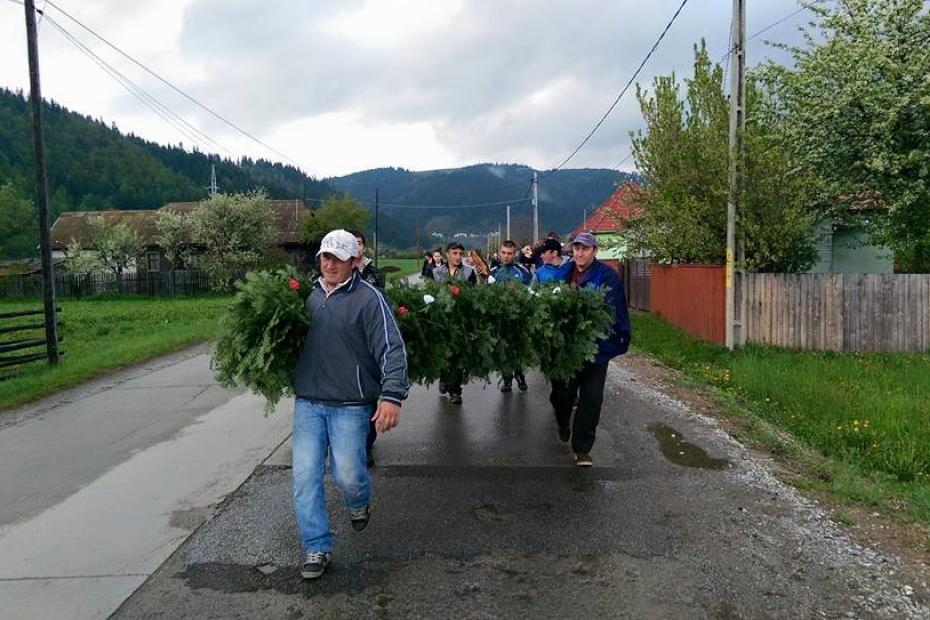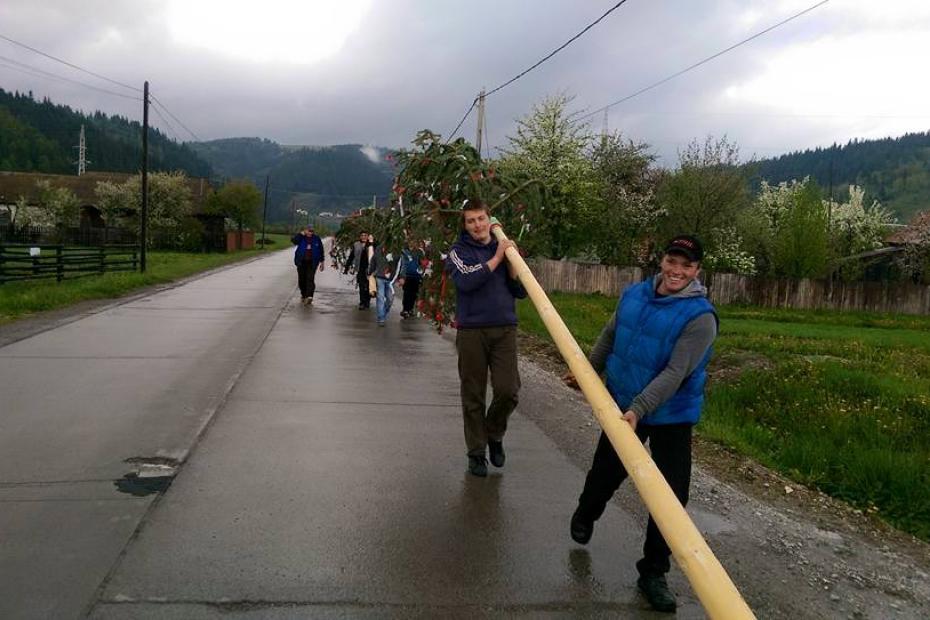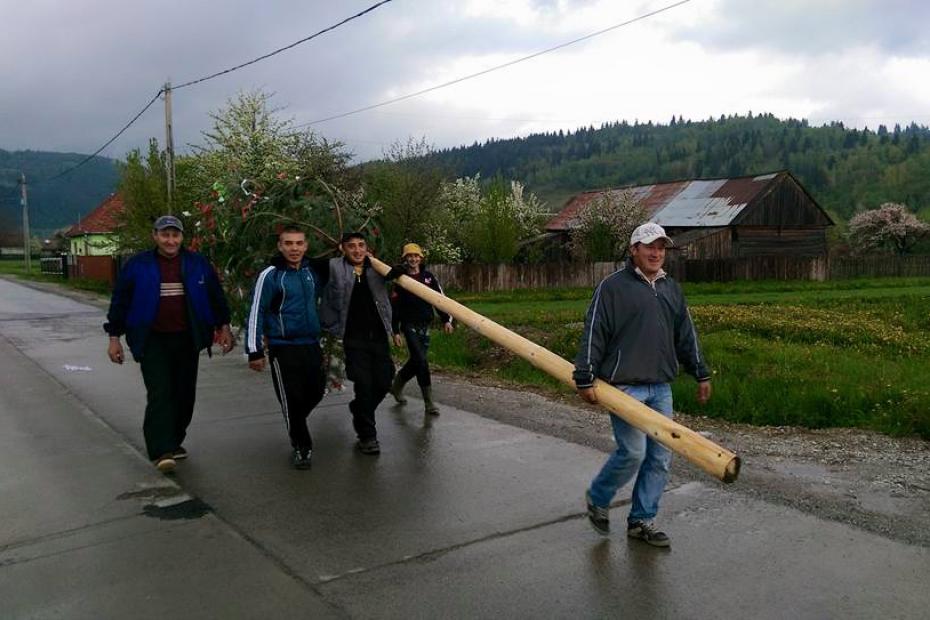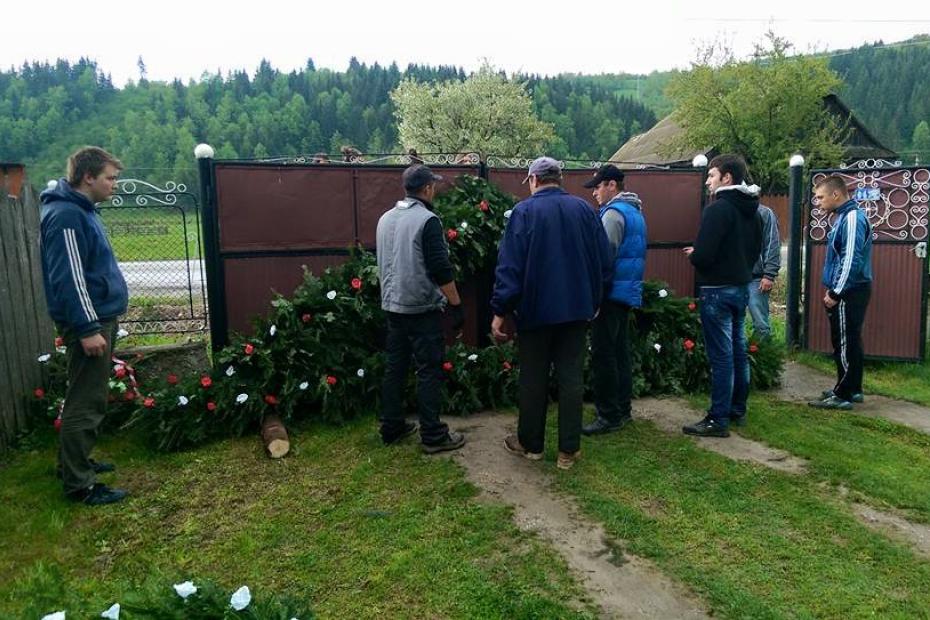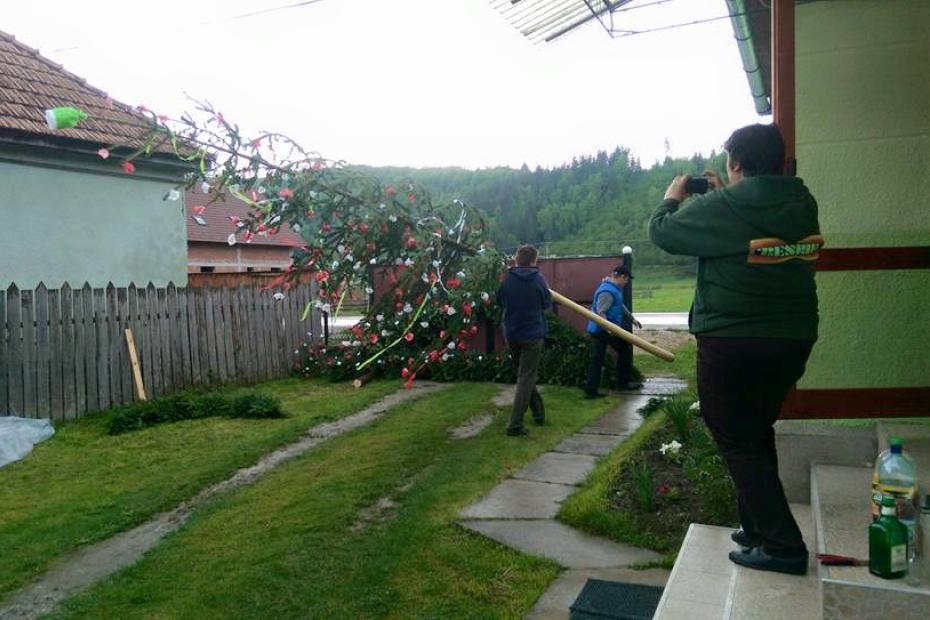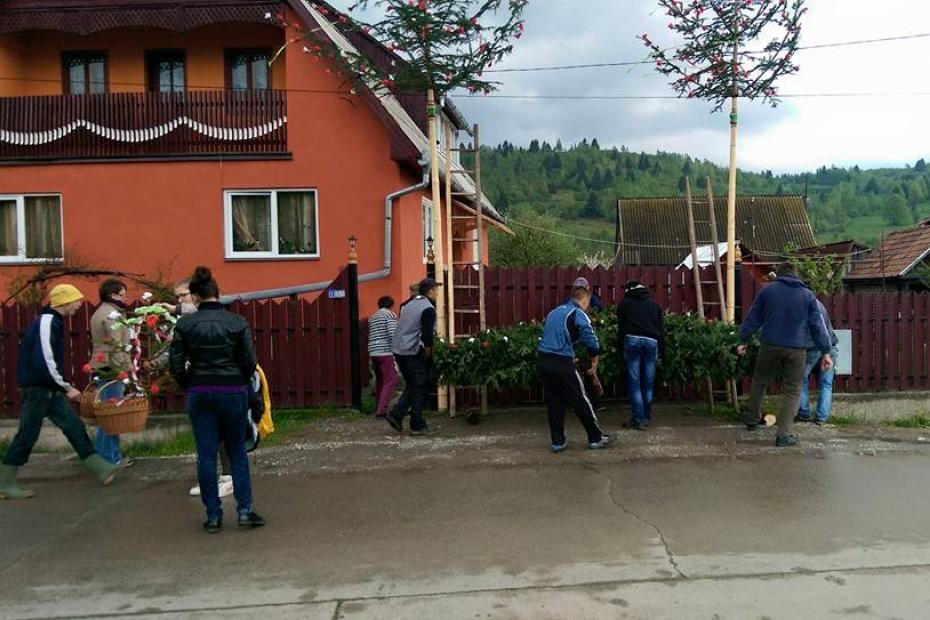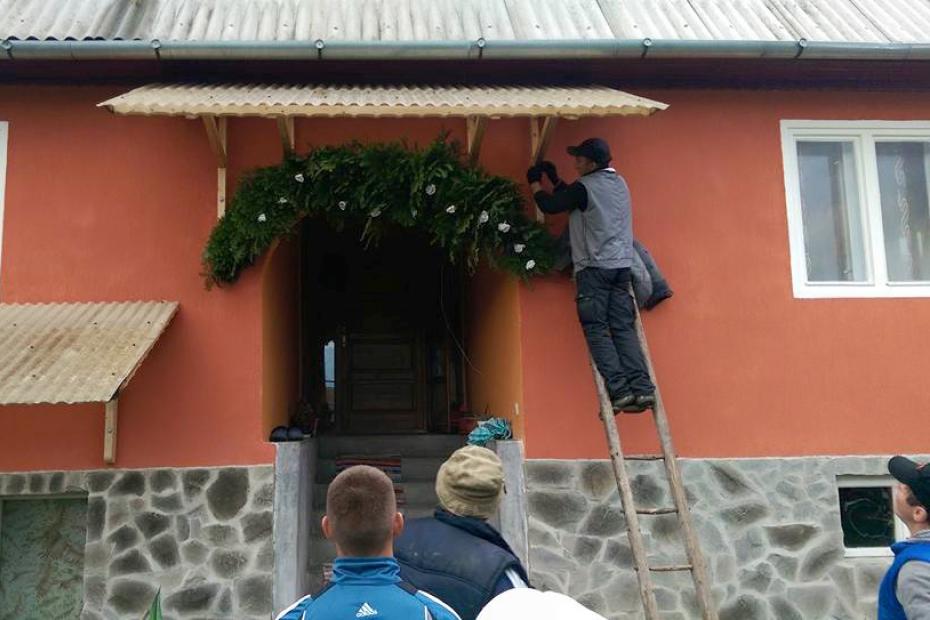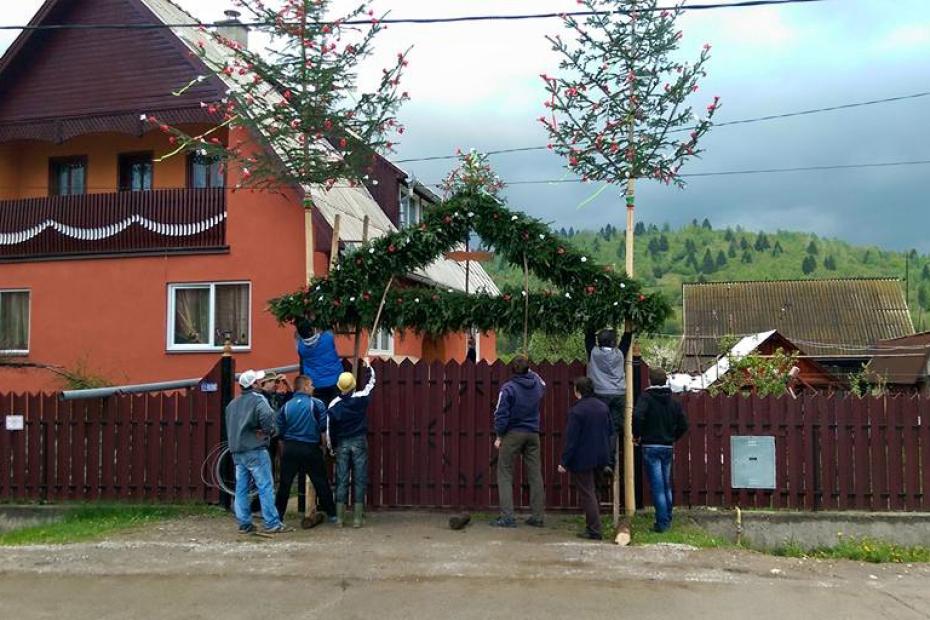There are typical colors you get used to seeing as you drive or walk through a Catholic village in Romania in the summertime: the deep greens of the haymeadows and potato fields and the soft browns of stained-wood fences and houses. Against this backdrop, your eye might land on a striking color: the bright white interior wood of pine poles, stripped of their exterior bark, stretching at least a meter and a half above either side of a house’s front entryway and reaching a peak above a house’s rooftop. On top of the poles are fir boughs richly decorated with red flowers and cloth strips. These poles are called a “perec” and they are given to a young man on the day before his wedding, a gift of from his friends and relatives.
Most young men get around their villages in cars if they can afford them. But on this occasion, a group of young friends of the groom borrow a horse cart and head out together to cut down the trees for the perec. They announce their purpose to the village by singing loud ballads, accompanied by an older accordionist, as they go out and come back through the village. Many young men today feel ambivalent, at best, about attending Mass, praying before meals at home, and a host of other formal and informal Catholic ritual practices. In interviews, devout parents will often deny that their sons’ lack of religious interest bothers them. During informal conversations with friends, though, parents will sometimes discuss their arguments with their sons about parents’ habit of going to Mass or spending money on pilgrimages. The perec is a popular ritual, in part, because young men will gladly participate in it, taking pleasure in the combination of work, singing, ribald joking, and display. The easily visible colors of the perec serve this last goal: their bright hues signal to all who pass by that someone who lives in this house will be married soon.
If you come back to the village a few days later, you might also happen on a crowd, men and women dressed in formal suits and ties and dresses, so large it blocks the street to traffic. This groups has gathered in front of the bride’s house for an event called the “mennyasszony kikérés,” or the calling out of the bride. If the groom lives in the same village as the bride, they gather at the groom’s home to walk in a long procession on the side of the road. This is a rowdy and laughter-filled affair, and the crowd enjoys interrupting the proceedings with cat-calls and ribald jokes. Older women in the groom’s family stand right behind the groom and crowd around the front of the house in very visible positions, and they take a special pleasure in cat-calling and ribald joking.
The groom is greeted by the bride’s male relatives who block his entrance through the front gate. Their entire conversation takes place in a highly formal style, calling each other “my lord” and “sir” even though the two families likely know each other well. After claiming that the groom has come to the wrong house, there is no young woman with his bride’s name who lives here, they relent and let him in the gate. He then waits outside the front porch while the male relatives supposedly bring out his bride. First, though, they come out with a young girl. The groom is supposed to refuse her politely, for instance by saying, “She’s a little too short.” Then they bring out an older female relative who banters with the groom, trying to persuade him to accept this offer. Before the groom turns her back, as well, the women in the crowd will join in the conversation, pointing out the woman’s positive qualities: “After all, she’s already experienced!” Finally, the bride will come out of the house, and this is usually the first time the groom has seen her in her wedding dress. When looking back on the moment years later, men will say that this was the moment when they felt most nervous during their wedding. The calling out of the bride is a loud and raucous counterpoint to the solemn ceremonies to come later that day, especially during the legal wedding rite in the city hall.
Wedding couples today prefer contemporary, Charismatic music
Catholics’ musical tastes are changing, and these changes are often visible during weddings. Parish wedding ceremonies and receptions are becoming less solemn as young people adopt popular Charismatic genres and styles. Acoustic guitars and other popular instruments are replacing organ-based hymns during the wedding Mass. Young Charismatics sometimes try to clap, lift their hands in prayer, and shout out in praise while singing. In interviews, Charismatics report that they felt filled with the Holy Spirit and moved to worship in this way. Others feel that this is an appropriate way to “renew” the church, since so many participants at a wedding might not have had an opportunity to participate in a Charismatic Mass.
Their parents, in contrast, learned to sing ballads and “traditional” songs. These ballads are especially popular among middle-aged men who learned them in school and performed them during socialist-era cultural festivals. At some point during any village festival, as the celebration moves on into the evening, small groups of men are liable to start singing one of these ballads. They remain seated at their tables while they sing. As one verse ends, a man will start the next. The singing takes on a slow “call-and-response” feel, since there is typically a short pause between the start of the verse and the moment when the others recognize the words and join in. Observation at one wedding of a Charismatic Catholic illustrated a dramatic generational divide in musical taste. At one point during the reception, the couple’s friends, all involved in the Charismatic movement, sat glumly and silently at their table while the adults belted out ballads so loudly that they made conversation difficult. Later, in an interview, one of the friends commented that the ballads were especially unwelcome because, “It wasn’t at all our style.”
